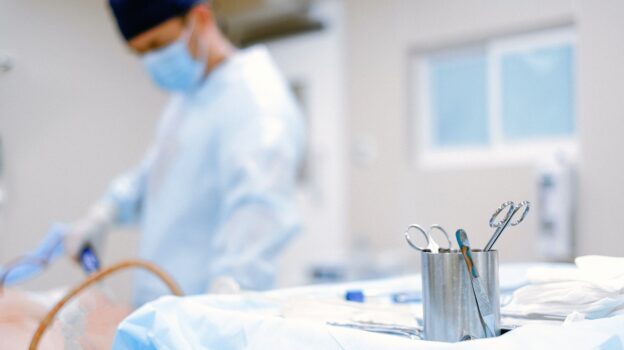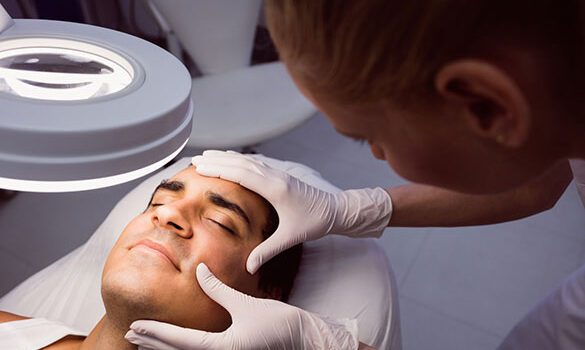After undergoing a plastic surgery, your body will require recovery time before you are able to safely return to your workout routine. This recovery time is essential to your healing process, avoiding complication, and your overall health.
After a surgery, your surgeon will be able to recommend a timeline for how long you should wait until you return to regular exercise and may be able to suggest some alternative exercises so you can remain active without injury or complication. Since every body and procedure is different, the type of surgery you have undergone and your body’s reaction will ultimately determine how long you need to avoid physical activity.
GraceMed offers plastic surgery in Toronto and across the GTA, each of our surgeons will provide ample instructions for post-operative care. We will guide you every step of the way to ensure an easy recovery.
Since every patient is unique, each person’s workout routine after surgery needs to be customized based on their overall health and fitness levels. However, you still need to follow some basic guidelines about exercising after surgery for a seamless recovery.
Use our guide to help you create your custom workout routine.
Exercising After Surgery
It is important to give your body time to heal and recover after a surgery before overexerting it. Although exercising after some specific surgeries can speed up recovery in some cases, going overboard can hinder the results and cause complications. For example, exercising after breast augmentation too soon after the procedure can shift the position of the implants.
Although it can be challenging for individuals with active lifestyles to remain sedentary for a while, proper rest will positively impact recovery. Exercising too soon after surgery can also result in bleeding, infection, or scarring, which could slow down your recovery.
There are some specific cosmetic procedures that you will particularly want to avoid exercising after. A facelift is one of the types of cosmetic surgery that requires you to avoid strenuous activity to avoid the risk of infection, swelling, and inflammation.

When Can I Start Exercising After Surgery?
Your surgeon will be best equipped to advise you on when you can start exercising after surgery. However, there are some general guideline you can follow to re-introduce physical activity slowly and safely after a surgery.
Here is a general timeline to help you determine when and how to re-introduce exercise into your life post-surgery:
First Few Days
Depending on the type of surgery you go through, you may need to be on complete bed rest for the first few days or engage in very light walking for a short duration. Your surgeon may tell you to increase your walking duration gradually. For example, you may be asked to start with five minutes a day and slowly increase this time as each day passes.
First Few Weeks
It is okay to increase your activity level as your body heals gradually. You can start getting back to your exercise routine after one to two weeks, starting with light exercises, such as jogging or slow cycling. You will still be in the initial stages of your recovery at this time, so it is crucial to avoid intense activities, such as weightlifting or fast-paced cardio.
Try not to elevate your heart rate too high when exercising after breast reduction surgery or any other major procedure. You can still enjoy the benefits of exercise at a slow pace until you’re ready for your routine.
After A Month
A month after most surgeries, your body will be closer to healing. So you might be ready to start incorporating heavier exercises into your workout regime. Your exact workout plan will look different based on your age, condition, weight, and type of surgery, but you likely be able to opt for slightly more intense workouts at this point.
You may start lifting light weights at this time or return to fast-paced cardio. Some people might be ready to go back to their regular workout routine at this time, but it will all depend on each body’s unique needs and the surgeon’s recommendations.

Best Exercises after Surgery
The ideal workout plan after a surgery will vary based on the type of surgery you have undergone. Here are some of the best exercises to do after different surgical procedures.
Exercises for After Liposuction
Liposuction is a surgical procedure that removes fat from different body areas, so it is necessary to exercise and follow a healthy diet to maintain its results.
Exercising after liposuction can be helpful if you follow an appropriate workout routine. Some helpful exercises include cycling, swimming, aerobics, Zumba, and running. Be sure to take your time to ease into the routine to avoid straining your body or causing complications during recovery.
If you are looking for stomach liposuction in Toronto, consider booking a consultation at one of GraceMed’s clinic locations. Our experts can tell you all about the treatment procedure and details regarding exercising after liposuction.
Exercises for After Breast Augmentation
Exercising after breast augmentation can be helpful in the long run, but it is essential to know which exercises to perform. Exercising too soon after your procedure can cause the implants to shift, making the breasts appear asymmetrical.
If you are considering breast augmentation in Toronto, visit one of GraceMed’s clinics in the GTA, where we have specialized surgeons who can help you determine a post-surgery workout plan to help you achieve the best recovery.
Some of the best exercises after breast augmentation are shoulder rolls, arm circles, seated abduction, and leg extensions. Focus more on the lower body and avoid upper body exercises that strain your breasts until you have fully recovered.
Exercises for After Breast Reduction
Although each person’s recovery timeline will vary, many patients can resume cardio four to six months after breast reduction surgery. Exercising after breast reduction surgery can help you obtain a better appearance if you gradually incorporate workouts into your routine.
You must remain cautious and avoid lifting heavy objects or intense exercise for a seamless breast reduction recovery process. It is best to focus on the lower area of your body and avoid straining your arms or upper body until you have fully recovered.
After breast reduction, some of the best exercises to try out are low-impact cardio, stationary biking, and an elliptical without the arm attachments.
Exercises for After Tummy Tuck
You can get a tummy tuck in Toronto at GraceMed clinics across the GTA to help you meet your ideal body goals. After surgery at our clinic, you can resume physical activities within six to eight weeks and gradually ease into your workout routine.
Exercising after tummy tuck surgery can seem challenging because it takes time to heal. But when you are ready to work out again, you can begin with crunches, sit-ups, and planks. Give your body some time to readjust to the workouts and take it slow.
Exercising after tummy tuck surgery will seem more straightforward when you regain your strength and energy as your body heals. At that point, you can start doing different exercises to focus on numerous stomach areas. Some exercises include aerobic exercises, weightlifting, and High-Intensity Interval Training (HIIT).
Exercises for After BBL
Brazilian Butt Lift (BBL) is a great way to enhance the buttocks’ shape, form, and size. However, regular exercise can better help you maintain the results.
If you are thinking to get a BBL in Toronto, know that patients generally get the green light to resume their workout regime after approximately four to six weeks. The recovery period allows the transferred fat in the butt to settle in and heal the treatment area. It is essential to be cautious when exercising after BBL as you do not want to strain your lower body too much.
When you’re ready to start exercising after BBL, start with low-impact workouts, such as squats, lunges, and core exercises. After your body has healed more, you can start introducing high-intensity workouts into your routine.

Exercise After a Facelift
Although a facelift is a cosmetic procedure, exercising after the surgery can pressure the incisions and hinder the healing process. GraceMed’s Toronto facelift surgeons recommend resumption of physical activities after four weeks of treatment.
After four weeks of treatment, you can start light exercises, such as walking or stationary biking. After six weeks have passed, you can start engaging in regular exercise routines, such as weightlifting or cardio.
The Risks of Exercising Too Soon After Surgery
Resuming your regular workout routine too soon can cause complications during your recovery. It is essential to let your body heal before putting any strain on it.
Each type of surgery mentioned in this guide is intense and requires proper care to enhance healing. Jumping into your regular fitness routine before your body is ready can cause the following problems.
Higher Risk of Infection from Sweating
Working out intensely can cause you to sweat too much, posing a risk of infection. A surgical site infection (SSI) is relatively common and occurs in 2 to 5 percent of surgeries involving incisions.
The risk of an SSI is higher when you sweat, so it is best to avoid physical activity that will cause excessive sweating until your wound heals.
Torn Incisions
Putting too much pressure on the treatment area can strain the incisions and cause them to tear. This can open a wound and require an emergency visit to the hospital, affecting your surgery’s recovery process and results.
Swelling Due to High Blood Pressure
High-intensity workouts can cause your blood pressure to rise, leading to swelling in the treatment area. Swelling can cause discomfort and pain and slow down recovery.

Fluid Buildup Causing Pain or Discomfort
Exercising after surgery can cause a seroma, a buildup of clear fluid inside the body. Although the fluid buildup isn’t harmful, it can cause pain and discomfort.
Distortion of Final Results
Improperly exercising after surgery can increase the risk of negatively distorting the final results of the treatment. The last thing you want is to ruin the results of your treatment by exercising too soon after the procedure.
Other Things to Consider When Exercising After Surgery
While following all the post-procedure instructions provided by your surgeon regarding your workout timeline, it might also help to be mindful to consider a few other factors. Here are some ways to ensure that your wounds heal with low risks of complications.
Take Your Time
Rushing to get back into your fitness routine and getting active too quickly after a surgical procedure can cause bruising, swelling, wound separation, and other complications. Ease your body into your workout routine slowly and take your time to add a new workout or increase your intensity level every week.
Listen to Your Body
If your body can’t handle exercise even after the surgery, it is vital to listen to it and take a break. It may take your body some time to adjust to your previous workout routine. Even if something seemed simple to you before the surgery, you might find it challenging now, which is normal. Listen to your body and adjust your workouts accordingly.
Prioritize Rest Days
Give yourself adequate time to rest between workouts, as it can help your body heal better. Try to take more rest days between workouts after surgery than you usually would. Your body’s endurance will gradually return, allowing you to exercise more frequently when your body is ready.
Wear Comfortable Gear
Uncomfortable clothing or shoes can complicate your workouts. Patients who have undergone might be required to wear comfortable clothing during workouts. Wearing comfortable gear, such as loose tops and breathable shoes, will help you ease into your workouts. Breast augmentation or reduction patients must wear a good supportive bra to maintain their results.

Understand the Consequences
Don’t neglect the consequences of disobeying your surgeon’s suggestions regarding your workout timeline. Although there is no guarantee that every person will react the same way, working out too soon after surgery can cause numerous complications in the recovery process and final results.
Enjoy Your Results
After you’ve allowed your body to recover from the surgery fully, you can enjoy the results and make your way back to the gym without worry. Giving your body sufficient time to heal will allow it to become stronger and adjust to the changes from treatment.

































